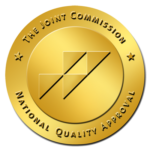Part II: Hypervigilance in PTSD
The Nature of PTSD
As we discussed in Part I on anxiety, Post-Traumatic Stress Disorder is a straightforward response to perceived threats in the environment, that are not actually present to the degree they are experienced. Usually, these threats have existed at some point in the past and the person with PTSD is responding to past threats to their survival. In PTSD, the person takes those threats out of the original context and applies them in another context where they may not represent an actual threat to life/existence. PTSD responses are usually more about the meaning of a traumatic experience than simply the event itself.
Trauma Triggers
Most of us are familiar with the idea of being ‘triggered’, it is an excellent and appropriate connotation. The gun has already been loaded, the hammer is cocked and now something has caused us to pull the trigger and the bullet (trauma response) has now left the gun and is impacting the environment.
Let us think of PTSD this way: The traumatic event occurs, which prompts the person to develop a meaning about themselves connected to their survival. The traumatic event now becomes a traumatic experience (event + meaning). That meaning usually has grown out of earlier events and situations that have combined in this case to create strong meanings about the person. The traumatic experience includes specific pieces that the brain has captured as being related to the traumatic event – for example time of day, day of the week, smells, lighting, colors, weather, etc. We do not know what all our minds have connected to the events and the meanings, but the brain is now on the lookout for these cues, or ‘triggers’ that indicate a traumatic event is about to re-occur.
Definition of Hypervigilance
There are many definitions of hypervigilance. The problem with most of these definitions is that they are rational – the subject is ‘hyper-alert’ or constantly ‘on-guard’, etc. Any/all of these convey that the hypervigilance is more than typical. Let us expand this into a concrete definition we can use to understand what happens in PTSD:
Hypervigilance is the KNOWLEDGE that the trauma WILL happen again
On examination, we see that no one knows what WILL happen in the future. This definition is irrational but closer to the experience. In treating PTSD, we focus on what we call ‘maladaptive beliefs’. We develop maladaptive beliefs to protect ourselves however, the belief, if it was ever productive, has become unproductive. Thee belief does not help the person adapt productively to the environment. If we consider a person who was raped or abused by a man or men while growing up, they may develop an ADAPTIVE belief that they have to be cautious in certain circumstances. A MALADAPTIVE belief would be that “all men are unsafe”. This black and white belief serves to keep the person safe from their trauma. If they NEVER associate with men, they will be safe from men. Most maladaptive beliefs have this black and white quality because it is much easier to implement a black and white solution than something gray and conditional. The earlier adaptive belief – “I have to be cautious in certain situations” is full of gray areas and risk – however, it is not rational to assume you can live a full life and never interact with men.
In this example, if the person were on an elevator and a man entered the elevator with them, their threat response would be triggered, and their hypervigilance would now be looking for the cues that indicate their trauma is about to re-occur. Since this is (now) a survival situation, the body goes into a physical threat response. If any of the cues are present, the person may respond to protect themselves from a threat that is not present. Colors, clothing, proximity, smells, speech, race – any of these things, and more could be cues that trigger the response even if the person is unaware that is what is happening. When they arrive on their floor, they may be experiencing a “panic” or “anxiety” attack which is just a normal mammalian response to a threat situation. They may be upset for some time without realizing the causes, or they may fall back on their belief that they were not safe.
The Role of Hypervigilance in PTSD
When we define hypervigilance like this, hypervigilance begins to take on a much bigger role in PTSD. It is not merely a symptom. It is the central feature of PTSD – the maladaptive belief that I need to be in constant preparation to keep myself safe from a specific traumatic experience, even when it cannot reasonably happen. Hypervigilance is the belief set and responses that will keep me safe.
Triggers and Hypervigilance
Day to day, the person with PTSD is waiting for their trauma to re-occur. They KNOW it will re-occur. Separate and stronger than believing or thinking, this is a perseverating KNOWLEDGE that must be honored to stay safe. It is not an afterthought; it is a constant presence. It is difficult to challenge because it keeps the person safe. It is difficult for others to challenge because the person with PTSD is not going to trust the opinions of others against their own survival.
The person is constantly on the lookout for those cues or triggers that signal the event is about to re-occur. We do not know the extent of how the brain has cataloged these cues, but it is constantly filtering sensory information against the ‘list’ of cues looking for those signs. Depending on the trigger and the context, a person with PTSD may respond to a single cue or trigger or it may take an emerging pattern. A single smell may be enough to trigger a severe trauma response, or it may take a combination of time of day, certain colors, smells, sounds, etc. to come together and trigger a trauma response.
The Importance of Understanding Triggers
As we can see, hypervigilance can trigger a trauma response with just minimal information. If a person is unaware of their triggers, it may seem arbitrary or random. There may be no realization that it is based on events from the past. The person may recognize the trigger but believe that there is nothing they can do to prevent the trauma response, or even that they have no internal control over their triggers and responses at all. Since, often, the meaning of the traumatic experience connects to how the person with PTSD understands or believes others acted or reacted during the traumatic event, they may see all of this as something that happens external to them and they are not in control of their own safety.
By processing and studying the trauma (a practice that is difficult with PTSD) the person begins to see the patterns within the traumatic event or experience. They begin to recognize and understand the triggers. When they know some of their triggers, they are more able to understand and intervene in their trauma responses.
Hypervigilance and Recovery
The person recovering from PTSD can learn their triggers and share them with others in their circle of friends and family. They do not need to share the trauma details, per se, but rather what specific triggers they respond to. In doing this they can attempt to minimize the triggers in their environment and also work to reduce their responses to the triggers. The people around them can help them challenge the triggers – are they really happening, is the trauma recurring, is the trigger real in the situation or just reminiscent of the trauma events? Through this, the person can work to self soothe and calm and they can have new experiences around these old triggers and begin to challenge the black and white beliefs that they once thought protected them from harm.
Treatment
There are several treatments for PTSD. The most lasting and effective seem to center on processing the trauma, understanding the beliefs that grew out of the traumatic experiences, and learning to recognize and challenge those beliefs to take risks and learn new beliefs to replace the old. There are many treatment modalities that include this, there are also treatment modalities that supplement these specific steps. Challenging beliefs can be long-term work, but the skills that allow the person to calm and soothe, alongside the skills to challenge the beliefs (within healthy relationships that offer other experiences) can be developed rather quickly. Medication has a role in the treatment, but no medication can resolve or ‘cure’ PTSD. Since healthy relationships are critical, a treatment that includes recognizing, establishing, and maintaining healthy relationships is a critical element of treatment.
For me, as a therapist, while there are a lot of tools in treating PTSD and a lot of theories, PTSD still boils down to meaning. Where in the body is meaning held? The meaning comes out of relationships and possibly the only real way to challenge that meaning is in other relationships that offer a different outcome. We learn more about the body and mind every day, but we cannot exclude meaning from the treatment of PTSD and expect lasting results.
Copyright © 2019 Shared Expectations PLLC/Michael Bryan Allison LMFT

